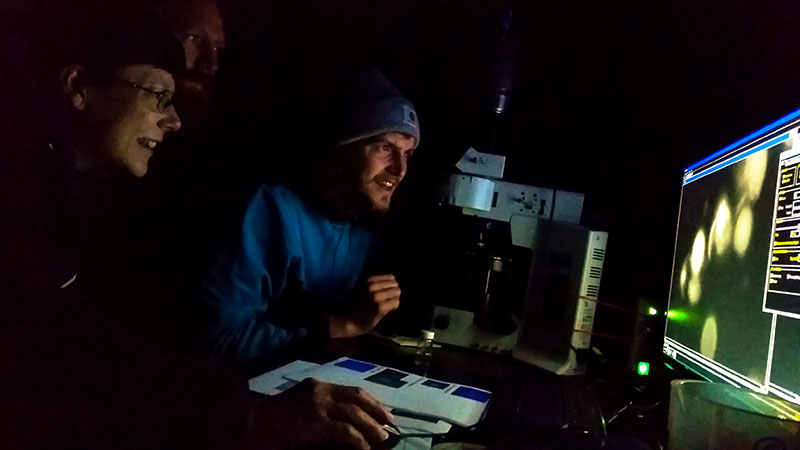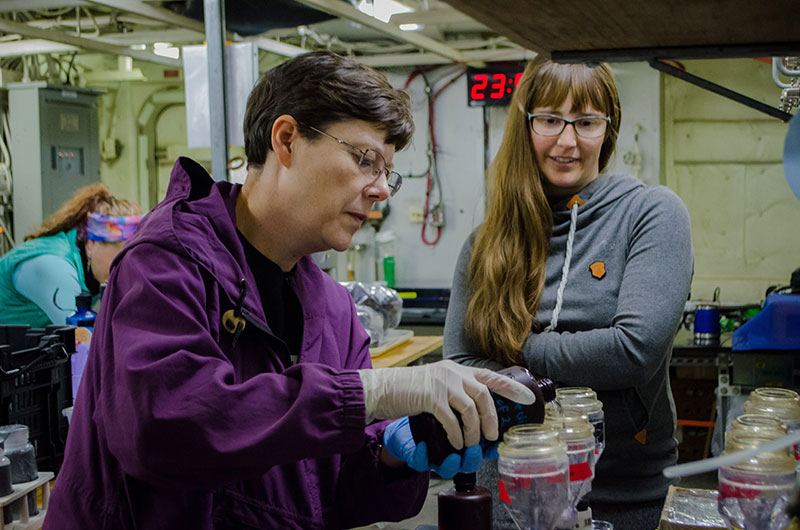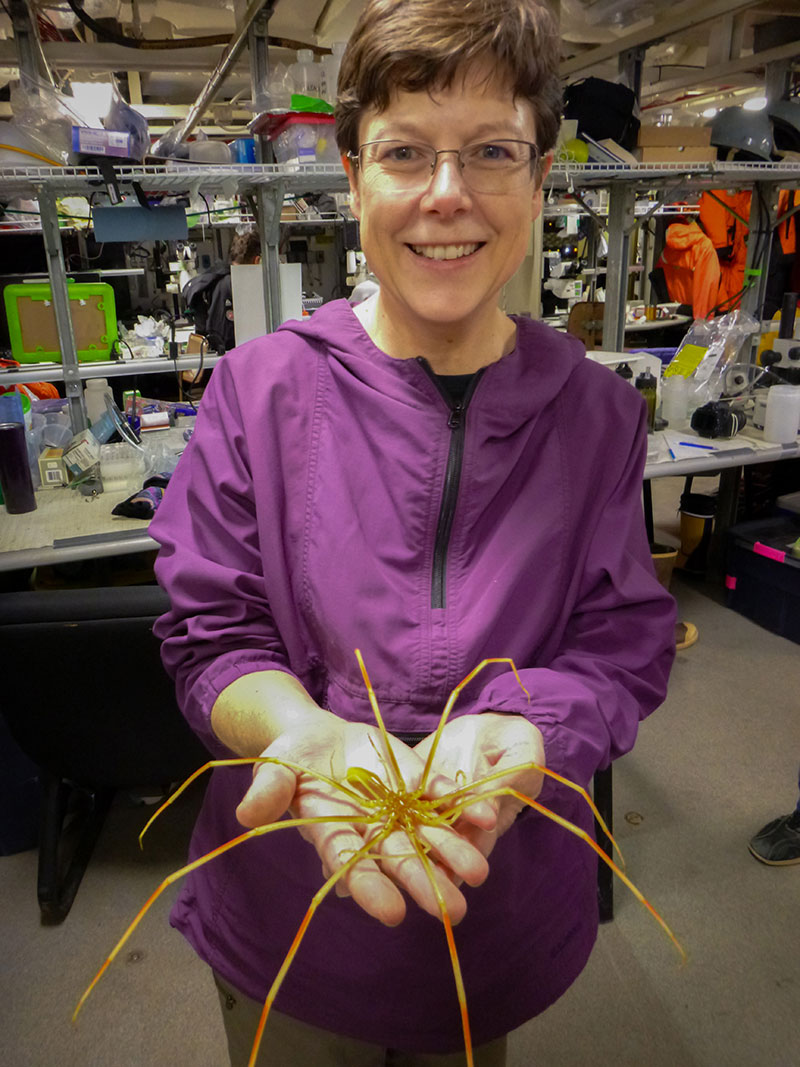
By Sandra Thornton, NOAA Teacher at Sea & PolarTREC Fellow, Broadwater Academy
August 8, 2016

Kyle Dilliplaine and Eric Collins demonstrate their research on fluorescence and microbes to Sandra Thornton. Image courtesy of Erica Escajeda, University of Washington, The Hidden Ocean 2016: Chukchi Borderlands. Download larger version (1.1 MB).
As a PolarTREC fellow/NOAA Teacher at Sea, I have been privileged to participate in The Hidden Ocean 2016: Chukchi Borderlands expedition. In these capacities, I have gotten to explore the many different types of research being conducted during this expedition; had access to an amazing group of scientists, students, and technicians; and experienced life aboard a U.S. Coast Guard icebreaker/research vessel. Daily journaling has allowed me to share my experiences with others, and I hope I have been able to convey even a small bit of the excitement and wonder I have felt on so many levels during this voyage. (You can read Sandra’s PolarTREC journals by clicking here ).
When I first began the PolarTREC application process, I was excited to learn more about life in the Arctic and the delicate balance being impacted by global climate change; however, this journey has been so much more than that. From “big ticket” firsts like seeing polar bears, walruses, whales, and a ribbon seal in their natural habitat; to seeing previously undescribed deep-sea creatures (see the “Dr. Lindsay and Mr. Pumpkin” log here); to the microscopic bacteria living in Arctic ice, these creatures have filled me with wonder and appreciation for the unique characteristics that allow each animal to live and thrive in a challenging Arctic environment.

Alexis Walker observes as Sandra Thornton assists with filtering water collected from the CTD. Image courtesy of Caitlin Bailey, GFOE, The Hidden Ocean 2016: Chukchi Borderlands. Download larger version (4.1 MB).
Even at latitudes where life above ice was sparse, the contents of a sampling net would be teeming with life – brittle stars, jellies, ctenophores, tiny copepods, worms, and a diverse array of microscopic specimens. Gazing at the screen during a remotely operated vehicle dive, I found myself mesmerized by the rich variety of animals that could live in an environment of such extreme pressure and temperature.
Sieving mud from over 2,000 meters deep during July snow, learning about graduate students’ research, and having the opportunity to ask questions of some of the world’s leading Arctic scientists have all been bonuses of this incredible experience. As much as the sea creatures, the humans on board contributed a vibrant array of backgrounds and experiences. With individuals representing countries including Japan, Taiwan, Singapore, Australia, Russia, Norway, and the United States, I often compared the science team to a mini United Nations. Even though their backgrounds differ, these scientists all share a common passion for Arctic science. They are committed to what they do and readily share their enthusiasm.
A vital component of the PolarTREC/Teacher at Sea programs is classroom application of the teacher experience, and it is exciting to think of ways in which I will prepare classroom lessons that highlight many of the things I have learned on this expedition. I have found that students want to be involved, want to be part of the solution, and have an inherent curiosity about the world around them. My experiences aboard the U.S. Coast Guard Cutter Healy will be invaluable in helping me to promote a better understanding of Arctic science as well as to better address student needs in the science classroom.
As we head back towards port in Seward, I prefer to think ahead rather than dwell on the fact that my field experience is nearly finished, and I hope that in some small way, I will play a role in inspiring a student to stretch his or her own science wings on this amazing planet.

Sandra Thornton holds a sea spider, a specimen collected by the Global Explorer remotely operated vehicle. Image courtesy of Katrin Iken, UAF, The Hidden Ocean 2016: Chukchi Borderlands. Download larger version (2.2 MB).